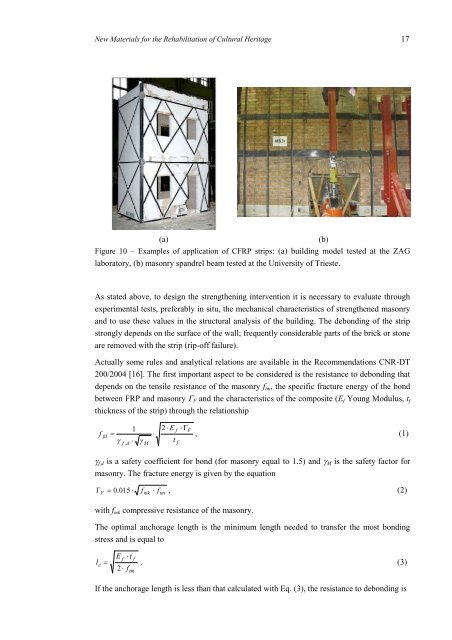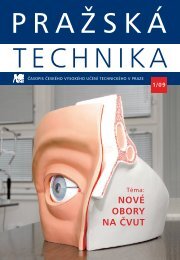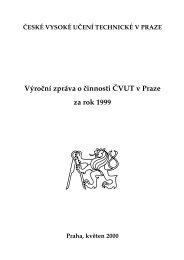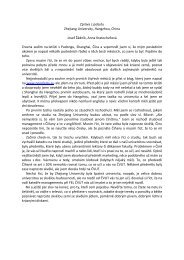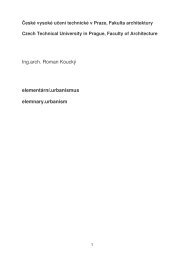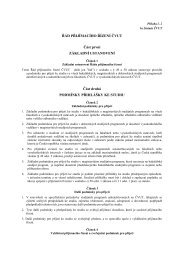New Materials for the Rehabilitation of Cultural Heritage - Czech ...
New Materials for the Rehabilitation of Cultural Heritage - Czech ...
New Materials for the Rehabilitation of Cultural Heritage - Czech ...
You also want an ePaper? Increase the reach of your titles
YUMPU automatically turns print PDFs into web optimized ePapers that Google loves.
<strong>New</strong> <strong>Materials</strong> <strong>for</strong> <strong>the</strong> <strong>Rehabilitation</strong> <strong>of</strong> <strong>Cultural</strong> <strong>Heritage</strong> 17<br />
(a) (b)<br />
Figure 10 –Examples <strong>of</strong> application <strong>of</strong> CFRP strips: (a) building model tested at <strong>the</strong> ZAG<br />
laboratory, (b) masonry spandrel beam tested at <strong>the</strong> University <strong>of</strong> Trieste.<br />
As stated above, to design <strong>the</strong> streng<strong>the</strong>ning intervention it is necessary to evaluate through<br />
experimental tests, preferably in situ, <strong>the</strong> mechanical characteristics <strong>of</strong> streng<strong>the</strong>ned masonry<br />
and to use <strong>the</strong>se values in <strong>the</strong> structural analysis <strong>of</strong> <strong>the</strong> building. The debonding <strong>of</strong> <strong>the</strong> strip<br />
strongly depends on <strong>the</strong> surface <strong>of</strong> <strong>the</strong> wall; frequently considerable parts <strong>of</strong> <strong>the</strong> brick or stone<br />
are removed with <strong>the</strong> strip (rip-<strong>of</strong>f failure).<br />
Actually some rules and analytical relations are available in <strong>the</strong> Recommendations CNR-DT<br />
200/2004 [16]. The first important aspect to be considered is <strong>the</strong> resistance to debonding that<br />
depends on <strong>the</strong> tensile resistance <strong>of</strong> <strong>the</strong> masonry ftm, <strong>the</strong> specific fracture energy <strong>of</strong> <strong>the</strong> bond<br />
between FRP and masonry �F and <strong>the</strong> characteristics <strong>of</strong> <strong>the</strong> composite (Ef Young Modulus, tf<br />
thickness <strong>of</strong> <strong>the</strong> strip) through <strong>the</strong> relationship<br />
f<br />
fd<br />
�<br />
�<br />
f , d<br />
1 2 �E<br />
f<br />
�<br />
��<br />
t<br />
M<br />
f<br />
��<br />
F<br />
, (1)<br />
�f,d is a safety coefficient <strong>for</strong> bond (<strong>for</strong> masonry equal to 1.5) and �M is <strong>the</strong> safety factor <strong>for</strong><br />
masonry. The fracture energy is given by <strong>the</strong> equation<br />
� �0<br />
. 015 � f �f<br />
, (2)<br />
F<br />
mk<br />
tm<br />
with fmk compressive resistance <strong>of</strong> <strong>the</strong> masonry.<br />
The optimal anchorage length is <strong>the</strong> minimum length needed to transfer <strong>the</strong> most bonding<br />
stress and is equal to<br />
l<br />
e<br />
E f �t<br />
f<br />
�<br />
2 �f<br />
tm<br />
. (3)<br />
If <strong>the</strong> anchorage length is less than that calculated with Eq. (3), <strong>the</strong> resistance to debonding is


